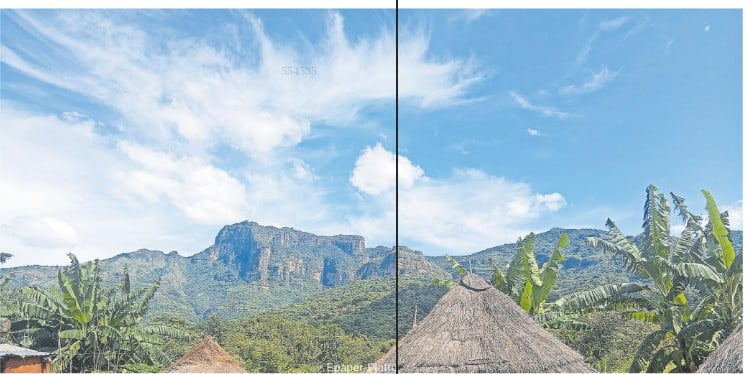Prime
E.A fuel sufficiency hopes hang on oil pipeline

An oil refinery in Kenya. A new pipeline - the Eldoret-Kampala pipeline - is part of the longer pipeline stretch that will run in sections -Mombasa to Nairobi and Nairobi to Eldoret. FILE PHOTO
What you need to know:
Critics argue that the country’s fuel sustainability is best guaranteed by a pipeline.
Fuel is undoubtedly one of Uganda’s leading imports, with products like diesel, unleaded fuel (petrol), kerosene and liquid petroleum gas (LPG) fetching an estimated bill of Shs1 trillion ($400 million) every year.
East African countries buy fuel through the open tendering system, of which, 66 per cent is allocated to Kenya and 33 per cent is allocated to Uganda.
Available ministry of Energy statistics from 2010 put daily consumption figures at, 940,000 litres for petrol; 1,585,000 litres for diesel and 170,000 litres for kerosene daily.
However, the 2013 figures put demand for petroleum products at 30,000 barrels.
Uganda being a land locked country, the principal mode of transport for fuel over the years has been road tankers via the major Nairobi-Eldoret-Malaba route. The industry is liberalised and several players have been at play for several years.
Save for the minor customs glitches that were addressed with the recent signing and adoption of a Single Customs Union by the Presidents of Kenya, Uganda and Rwanda, the political turbulence in Kenya that taught Ugandans tough lessons left a lot to be desired.
Following the 2007 post-election events in Kenya, government tried to interest fuel distributors in the (long) Southern route through Tanzania via Mutukula using tax rebates but attempts hit a dead end.
An oil import pipeline that runs from Eldoret to Kampala was proposed as alternative. Kenya already has pipeline which runs from Mombasa to Nairobi and to Eldoret—the pickup point for Ugandan fuel distributors.
The first pipeline proposition, dubbed TamOil, which was set to be constructed by a Libyan company, was overwhelmed by controversy and eventually the idea died away with the collapse of the Muamar Gaddafi regime.
Feasibility studies had been conducted of the area. The government eventually proposed plans to re-tender the process using the Public-Private Partnership (PPP) model.
Asked earlier on the progress, the commissioner of the Petroleum Supply Department, Rev. Frank Tukwasibwe, said developments were ongoing but if there is no fuel scarcity in the country there was no need for public anxiety.
Last year’s Kenyan election did not degenerate into chaos but anxiety due to past violence drove prices up from Shs3,500 to Shs3,800 for petrol and diesel from Shs3,450 to Shs3,500. The prices eventually came down.
Just a few months during the implementation of the Customs Union, there was a temporary scarcity because some trucks were held-up by tax officials.
Shortage
Mr Hans Paulsen, the managing director for Vivo Energy (formerly Shell), admits that generally when there is a shortage in the market, demand for the product increases and most players respond by increasing their price.
Other attempts like the restocking of the 30 million litres-Jinja fuel reserves and Nakasongola reserves are still shrouded in uncertainty.
For that matter, critics have argued that the country’s fuel sustainability is best guaranteed by a pipeline.
The proposed Eldoret-Kampala pipeline is part of the longer pipeline stretch that will run in sections -Mombasa to Nairobi and Nairobi to Eldoret; with a new Mombasa to Nairobi pipeline set to be constructed at a fee of Shs1.3 trillion ($500 million) and a contract was awarded to China’s Sheng Li Engineering & Construction Company.
A Shs424 billion ($167 million) contract to refurbish the 325-kilometre stretch from Nairobi to Eldoret was also recently completed.
The section to Kampala once realised, is expected to untangle the complex fuel chain which usually starts in Kenya.
In February, the three East African Community Presidents Kenyatta Uhuru, Yoweri Museveni, and Paul Kagame endorsed the procurement process for Engineering, Procurement and Construction of the pipeline section which is also expected to stretch to Kigali through South-West Uganda.
“All partner states have made contribution to the bank account in Kigali towards the feasibility study for the EPC,” according to a joint statement by the heads of state.
They also sanctioned the tendering for the procurement of the pipeline’s construction and the tendering of documents for the feasibility study. This will also involve moving from Build Own Operate and Transfer (BOOT) to EPC.
The 352-kilometre pipeline expected to cost Shs762 billion ($300 million) will be protected by a Leak Detection System (LDS) which assists pipeline controllers in detecting and localising leaks.
The mechanism also guards against terrorism and natural sabotage like earthquakes by displaying through employment of alarms and data displays to the control centres, according to its proposed outlook, according to the statement.
Some of the fuel distributors have welcomed the idea, especially if it is fast-tracked.
Lois Aber, the marketing and communications officer at Total, told Prosper magazine that whereas they cannot extensively comment on it because it is a government initiative, the [pipeline] idea is good.
Mr Paulsen, further, revealed that (it’s true) they are keen on the development of a new pipeline because it will definitely improve the supply situation in the country.
However, “the benefits of the new pipeline would mostly be appreciated if this project runs concurrently with the upgrading of the Kenya side of the pipeline,” Mr Paulsen said.
But in light of the intermittent interruptions in the supply chain, he said, the company is “more than doubling storage capacity for fuel and Shell LPG” in the current months.
“The challenge of fuel sufficiency is mostly a factor of challenges involved in importing the product into Uganda.,” Mr Paulsen said.
Energy Ministry spokesman Matovu Bukenya says they are keen on seeing the pipeline project take shape because it will save Uganda a lot.
“As the ministry, we cannot comment much about it because the three presidents sanctioned a process which is ongoing,” he said.
Once completed, road tankers are expected to be phased-off the road. There will be two plant area-pump stations, the first at Jina and the second in Kampala.
But above all, the utmost hope for the future guaranteeing fuel sustenance are the recent developments in the oil sector, most notably the proposed 60,000 barrels-per-day (bpd) refinery with the first 30,000 bpd phase expected to be up and running by 2018.
Details about the oil pipeline
An oil import pipeline that runs from Eldoret to Kampala was proposed as alternative. Kenya already has pipeline which runs from Mombasa to Nairobi and to Eldoret—the pickup point for Ugandan fuel distributors.
The proposed Eldoret-Kampala pipeline is part of the longer pipeline stretch that will run in sections -Mombasa to Nairobi and Nairobi to Eldoret; with a new Mombasa to Nairobi pipeline set to be constructed.
Shs1.3 trillion: Proposed construction fee of the Mombasa to Nairobi pipeline.
Shs424 billion: Cost of refurbishing the 325-kilometre stretch from Nairobi to Eldoret.
30 million: Capacity (in litres) of the Jinja fuel reserves and Nakasongola reserves.
60,000: Daily capacity of the proposed refinery.




